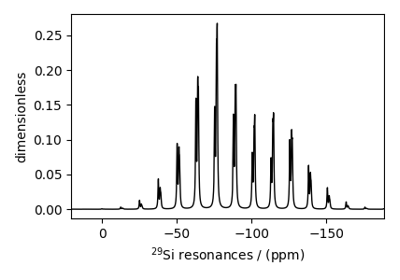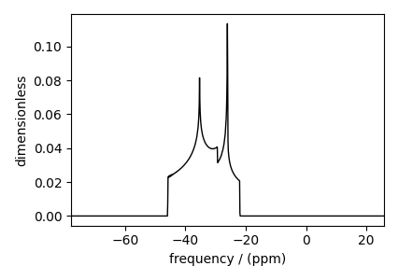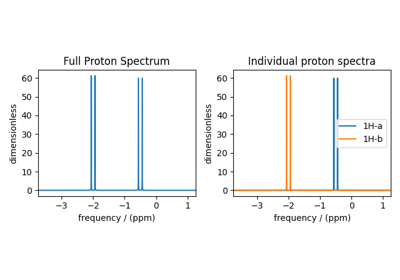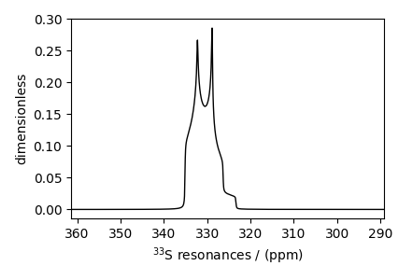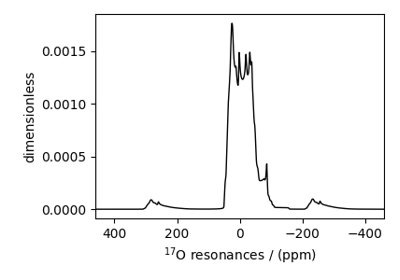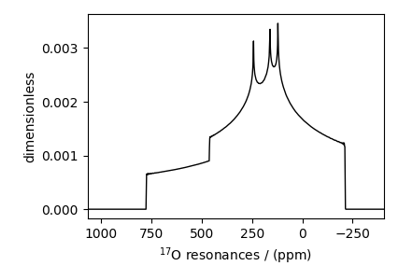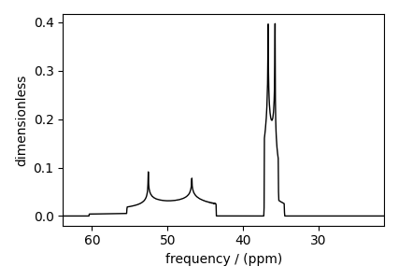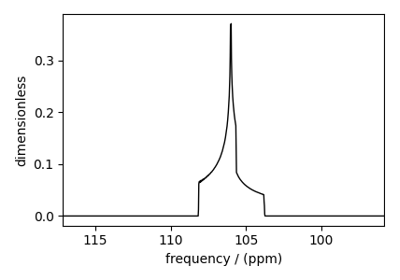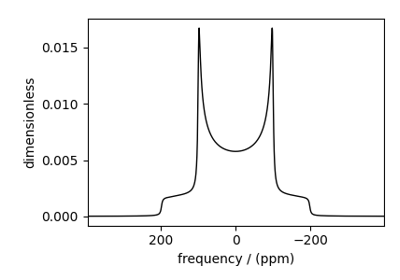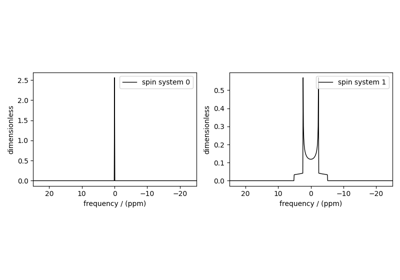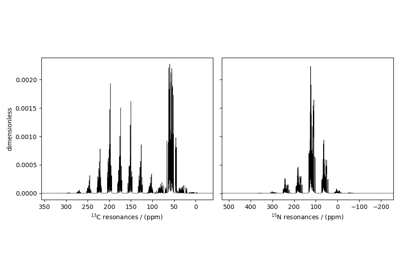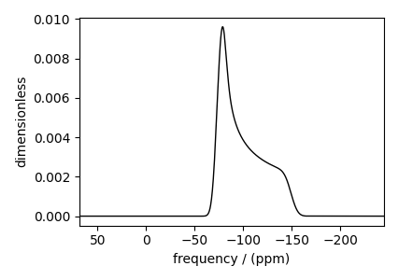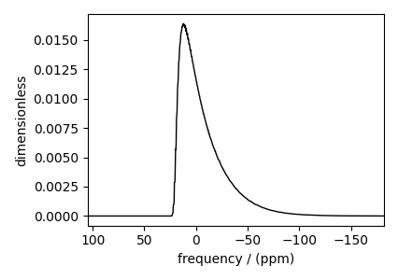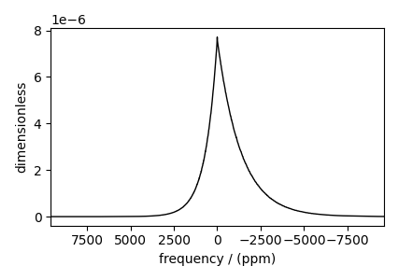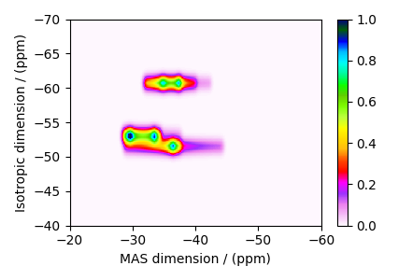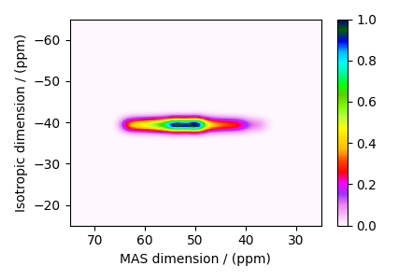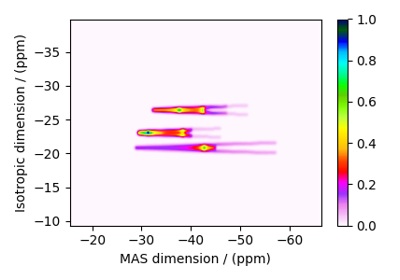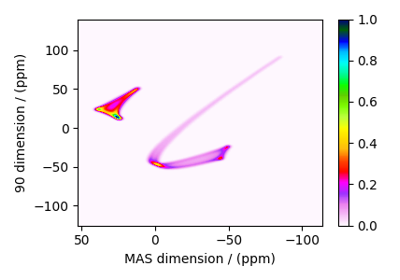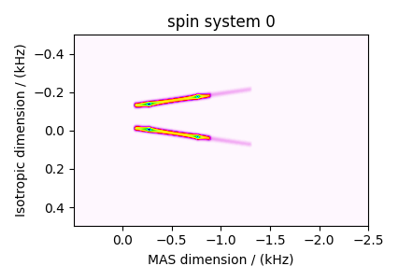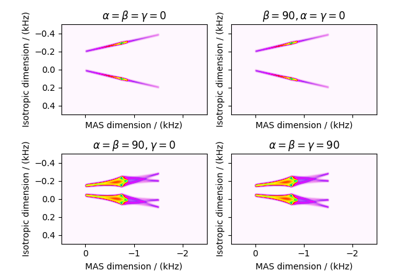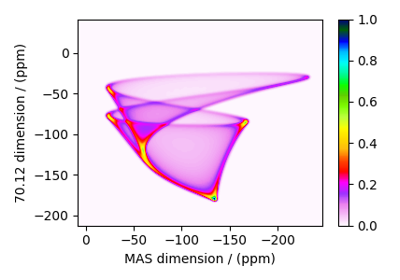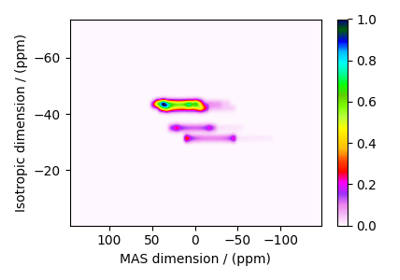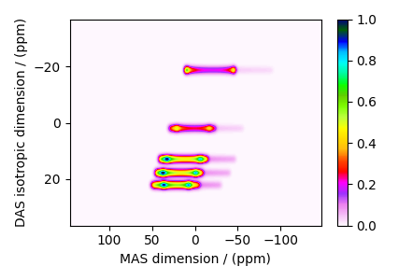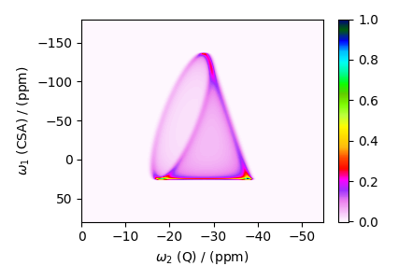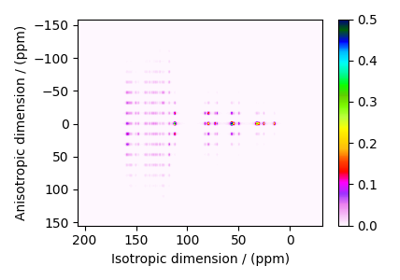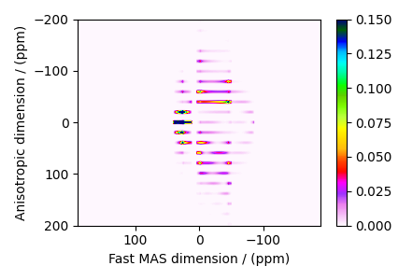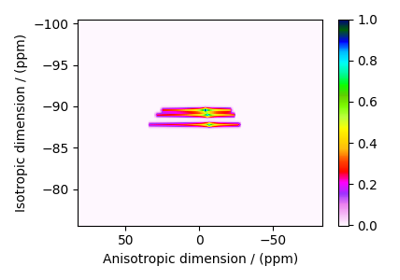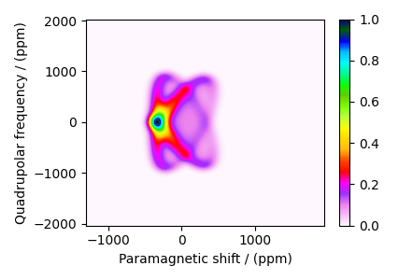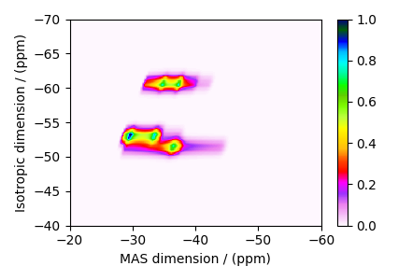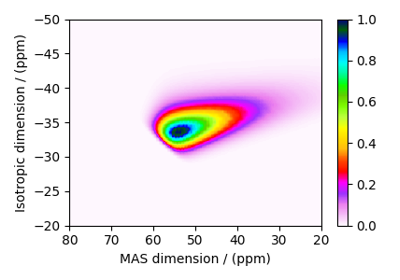Simulation Gallery¶
In this section, we use the mrsimulator tools to create spin systems and simulate spectrum with practical/experimental applications. These examples illustrate
building spin systems (uncoupled and weakly-coupled),
building NMR methods,
simulating spectrum, and
processing spectrum (e.g. adding line-broadening).
For applications related to least-squares fitting, see the Fitting (Least Squares) Gallery.
1D NMR simulation (small molecules/crystalline solids)¶
The following examples are the NMR spectrum simulation of small molecules and crystalline solids for the following methods:
Bloch decay method (
BlochDecaySpectrum),Central transition selective Bloch decay method (
BlochDecayCTSpectrum).Generic one-dimensional method (
Method1D).
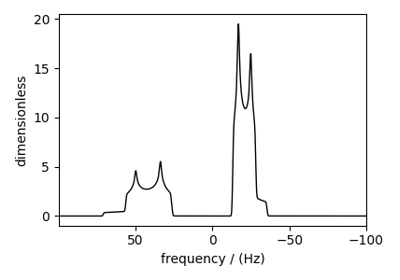
Influence of 14N on 13C NMR MAS spectra of glycine
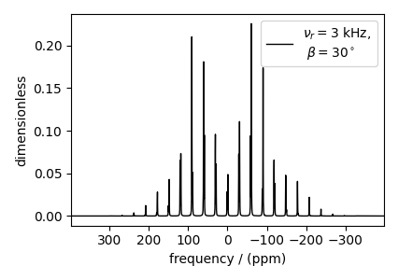
Coupled spin-1/2 (CSA + heteronuclear dipolar + J-couplings)
1D NMR simulation (macromolecules/amorphous solids)¶
The following examples are the NMR spectrum simulation of macromolecules and amorphous materials for the following methods:
Bloch decay method (
BlochDecaySpectrum),Central transition selective Bloch decay method (
BlochDecayCTSpectrum).
For NMR simulation of amorphous solids, we also show examples of simulating spectrum using user-defined model or using commonly accepted models such as Czjzek or extended Czjzek distribution.
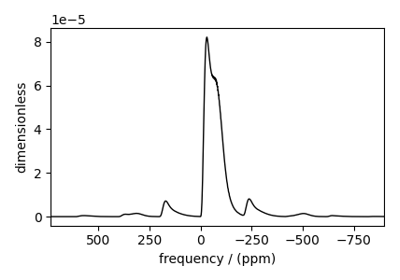
Extended Czjzek distribution (Shielding and Quadrupolar)
2D NMR simulation (Crystalline solids)¶
The following examples are the NMR spectrum simulation for crystalline solids. The examples include the illustrations for the following methods:
Triple-quantum variable-angle spinning (i.e., 3Q-MAS) using the specialized
ThreeQ_VAS()method.Satellite-transition variable-angle spinning (i.e., ST-MAS) using the specialized
ST1_VAS()method.Switched Angle Spinning (SAS) using the generic
Method()object.MAS-detected Dynamic Angle Spinning (DAS) using the generic
Method()object.Correlation of Anisotropies Separated Through Echo Refocusing (COASTER) using the generic
Method()object.Phase Adjusted Spinning Sidebands (PASS and QPASS) and Magic-Angle Turning (MAT and QMAT) using the specialized
SSB2D()method.
2D NMR simulation (Disordered/Amorphous solids)¶
The following examples are the NMR spectrum simulation for amorphous solids. The examples include the illustrations for the following methods:
Triple-quantum variable-angle spinning (
ThreeQ_VAS())

